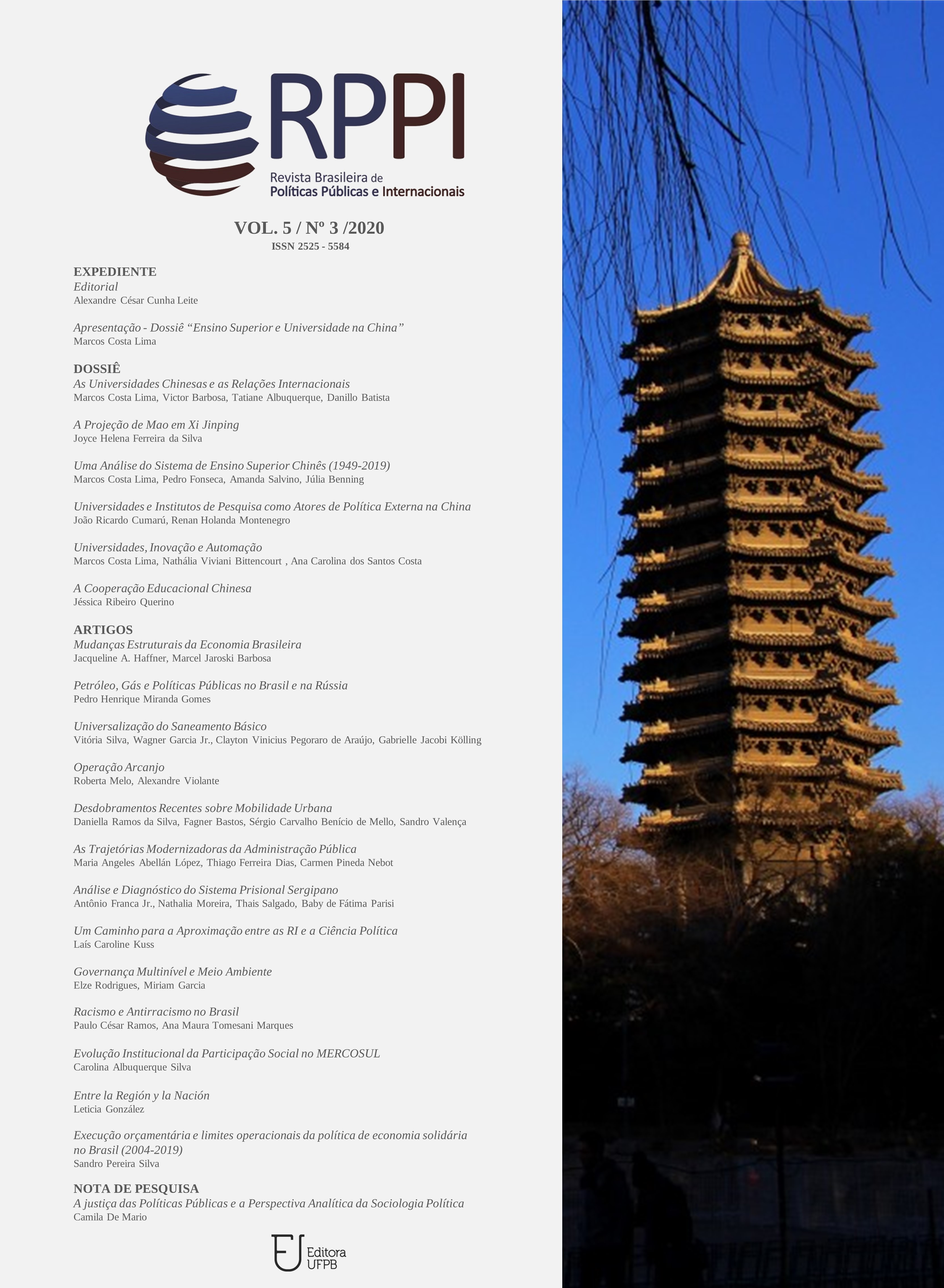An Analysis of the Chinese Higher Education System (1949-2019)
policies, advances and challenges
DOI:
https://doi.org/10.22478/ufpb.2525-5584.2020v5n3.55346Keywords:
Universities; Chinese University; Higher Education Reforms in China; Development policiesAbstract
This article aims to analyze historically the Chinese higher education system, presenting its main policies and advances. It is perceived that Chinese development is surprising, and the role of these educational reforms has contributed to advances, both in human resources and in innovation, as well as in educational infrastructure. Higher education has undergone reformulations since 1949, but in the post-reform and opening-up period, the tipping point in higher education came in 1993 when massive reforms were implemented in order to provide the Chinese higher system with greater capacity to meet social demands and China's policy. Thus, between 1993 and 2010, reforms emphasized massification, decentralization, liberation and privatization. Subsequently in order to create universities of international quality. The work also focuses on explaining two projects, the first entitled Project 211, implemented in 1995, with the government seeking to invest in around 100 universities to provide them with greater technical and scientific capacity in the 21st century. The second project, launched in 1998, it was called Project 985 and aimed to create world-class universities in the 21st century. Finally, the work presents challenges that still exist for the development of higher education.
Downloads
Downloads
Published
Issue
Section
License
Autores que publicam nesta revista concordam com os seguintes termos:- Autores mantém os direitos autorais e concedem à revista o direito de primeira publicação, com o trabalho simultaneamente licenciado sob a Licença Creative Commons Attribution que permite o compartilhamento do trabalho com reconhecimento da autoria e publicação inicial nesta revista.
- Autores têm autorização para assumir contratos adicionais separadamente, para distribuição não-exclusiva da versão do trabalho publicada nesta revista (ex.: publicar em repositório institucional ou como capítulo de livro), com reconhecimento de autoria e publicação inicial nesta revista.
- Autores têm permissão e são estimulados a publicar e distribuir seu trabalho online (ex.: em repositórios institucionais ou na sua página pessoal) a qualquer ponto antes ou durante o processo editorial, já que isso pode gerar alterações produtivas, bem como aumentar o impacto e a citação do trabalho publicado (Veja O Efeito do Acesso Livre).




_.jpg)






.png)


.jpg)
_.png)
